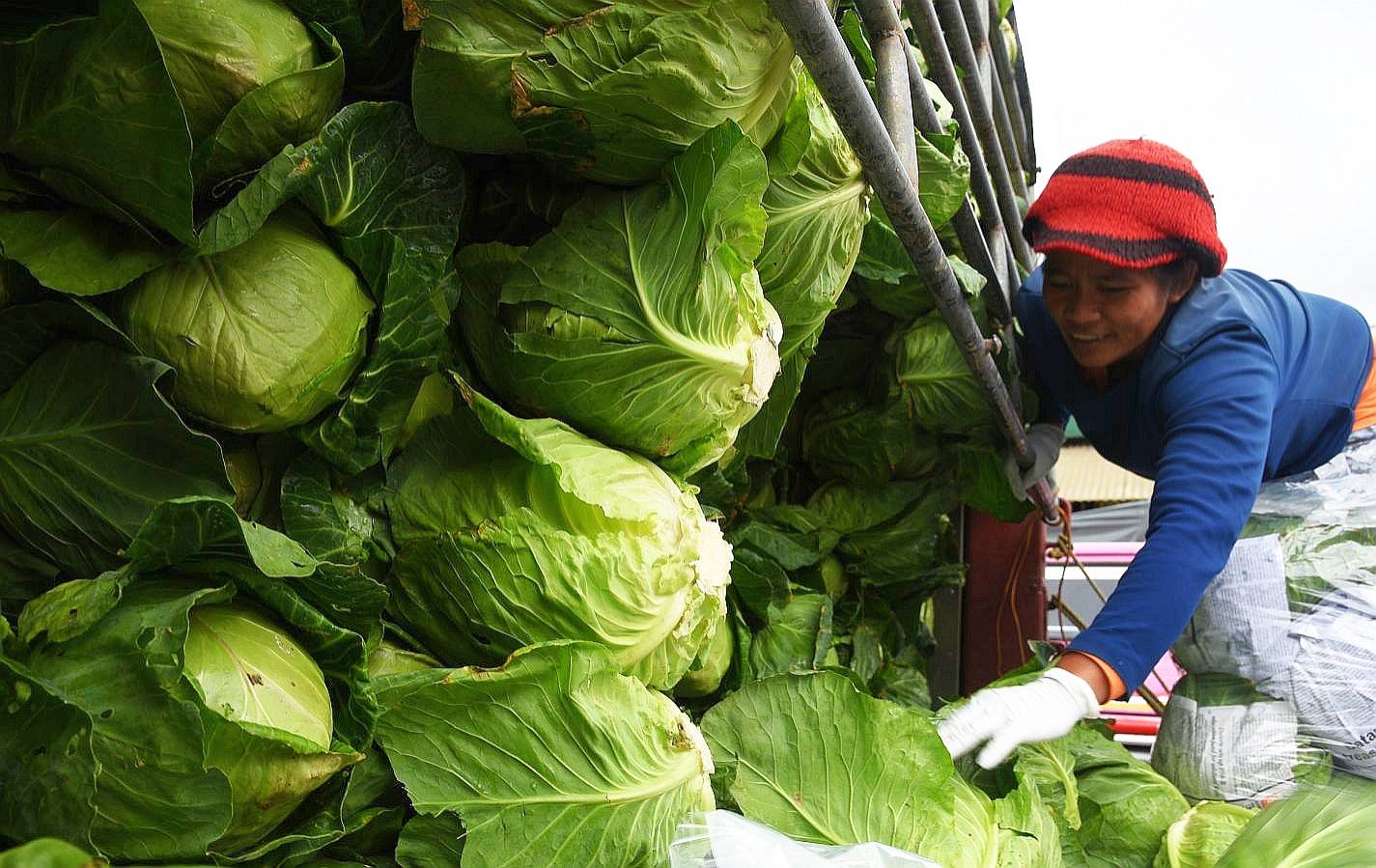
ECONOMIC DRIVER Salad vegetables produced by Benguet province’s farms, such as this truckload of cabbage ready to be shipped out to lowland buyers in 2018, are among the major economic drivers that have helped grow Cordillera’s economy. EV ESPIRITU
BAGUIO CITY, Philippines — Inflation shot up in the Cordillera in March to 4 percent from 3.1 percent in February at the height of the tourist season because of expensive food, electricity and gasoline that affected highland public transport, the Philippine Statistics Authority (PSA) said at a Friday briefing.
Last month’s high food prices generated a 6.4-percent inflation rate in the mountain region, specifically for rice and other grains, seafood, and vegetables like red onions, said Villafe Alibuyog, PSA Cordillera director.
It was a significant accelerator of highland inflation, she said.
Inflation in the Cordillera housing, water, electricity and fuel category rose to 0.5 percent last month from a contraction of 0.03 (-0.03) percent in February, speeding up Cordillera inflation, Alibuyog said.
Electricity costs, in particular, hiked inflation to a -5.9-percent rate in March from -11.9 percent in February.
Inflation rate
With the prices of diesel (12.3-percent inflation rate in March compared to -4.5 percent in February) and gasoline (-4.2 percent in March from -5.6 percent in February) rising, Alibuyog said transport inflation climbed to 3.9 percent in March from 3.2 percent in the previous month.
Only Apayao province reflected an inflation downtrend or a deceleration to 4.9 percent in March from 6.9 percent in February.
Ifugao province, home to the rice terraces that make up a combined World Heritage Site, posted the highest inflation rate of 6.8 percent in March, up from 6.5 percent in February.
Mountain Province, meanwhile, registered the lowest inflation rate with 1.4 percent, up from 0.3 percent the month before.
Inflation also skyrocketed in Baguio City, registering a steady climb to 3.6 percent in March, from 2.7 percent in February when the summer capital staged this year’s Baguio Flower Festival and 1.5 percent in January at the tail end of an inflation slowdown.
Among the major accelerators of Baguio inflation were restaurants and accommodation services, with a 7.6 percent rate in March, up from 6.6 percent in February.
Despite steep food prices, however, the city also reflected negative inflation for milk, dairy products and eggs in March, with a rapid drop to -1.2-percent rate from 3.2 percent in February. —VINCENT CABREZA